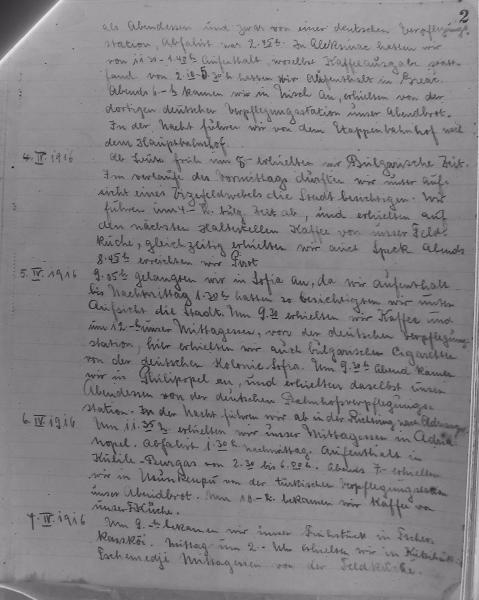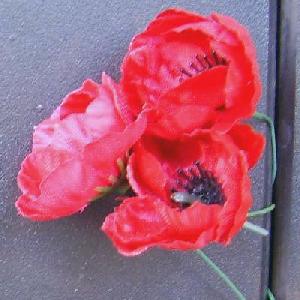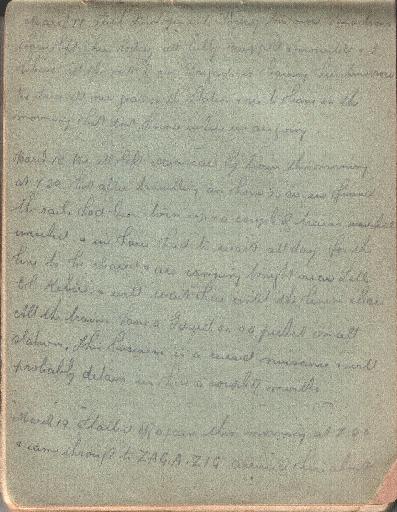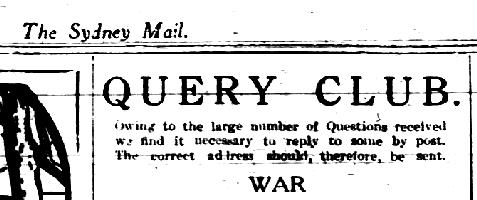Topic: AIF - Cars
1st AUSTRALIAN ARMOURED CAR SECTION, AIF
PALESTINE
Part 3
This is a transcription from a manuscript submitted by Captain E.H. James called "The Motor Patrol". It is lodged in the AWM as AWM 224 MSS 209. This is Part 3.
PALESTINE
Before dark, according to instructions, we retired to Es Salt which we reached in time to make a comfortable camp for the night. However, before leaving our position of the night before the advance party of the infantry division had reached us and was well on its way to junction with the mounted division.
We stayed next day at Es Salt and sent messages through to Divisional H.Q. asking for orders. Next day was Good Friday which we spent (also the three following days) in driving along the Es Salt to Amman road and bringing in loads of wounded who were compelled to walk as it was not possible for the ambulances to reach them. We were able however, to give a pretty rough ride to quite a number of these poor chaps who were nearly dead with wounds, cold and exposure. Later on some of the light ambulances managed to get up into the hills and we received instructions to protect them from interference, which we did by continually patrolling the road.
The troops were having a pretty rough spin altogether. The weather was bitterly cold and wet and most of them were soaked to the skin, day and night. Some of the natives were also giving some trouble and there were rumours of retirement. All day and night the population of Es Salt and the surrounding district were slowly evacuating their homes and with their valuables packed up began to march down the long road through the hills to the Jordan Valley over twenty miles below. Word had evidently reached the villagers that we intended to retire to the valley again shortly and they were fearful of the vengeance that the Turks, on their return, would turn upon them for helping the British during the advance. The road was becoming filled with refugees and it was pitiful to see tiny children and old people quite unfit for such a journey endeavouring to do the long walk with their bundles. On the first of April we received orders to evacuate the Es Salt and return to Shunet Nimrin at the foot of the hills.
The trouble apparently was not that we could not hold our own in the hills but the difficulties of transport for supplies and ammunition were too great to keep up for an extended period. We now saw the worst side of war as we had to force our way through the panic stricken population and we could imagine what a retreat meant. Numbers of footsore and crying villagers asked for seats in our patrol cars and many of the men were quite willing to walk and let these poor people have their seats but this could not be allowed as military considerations had to come first and we had to be hard hearted and keep to our schedules. We left Shunet Nimrin at 6.30 a.m. next day and proceeded to cross the Jordan at the Ghoranyeh Bridge about an hour later while the enemy aeroplanes were making things very lively by bombing the road and bridge-head. However, we managed to run the gauntlet without suffering in any respect and joined our old comrades the Anzac Mounted Division at Jericho about 11 o'clock and learnt of the rough times they had experienced In their retirement and how the Cirsassians and Bedouins who had feted them on their advance had sniped them from every rock on their return journey. So this was the end of the first Amman Stunt.
Next morning the enemy reminded us that the war was still on by bombing our camp at daybreak from their planes. However, our chaps were so tired or else were getting used to bombs to such an extent that the majority of them would not stir from their blankets.
The enemy was beginning to get a bit cheeky and they evidently thought that as we had retired from the hills we were beaten and on the 11th April they came down from the hills and after a lot of shelling they began to attack our bridge heads on the Jordan. The Light Car Patrol received orders to take the Lewis Guns out of the cars and to reinforce the 1st Light Horse Brigade who were holding the foothills across the river. We placed our guns in the trenches under orders from the Brigade and vary soon had plenty of machine gun practise opening up at 1200 yards which was reduced later down to 500 yards range.
Next morning a large number of dead Turks were buried in front of our position so apparently the couple of thousand rounds of ammunition used by us was not all wasted. Our chaps relished the change of sitting down behind cover to do the shooting as generally the position was reversed and they were the targets. During the night the enemy retired to the hills again, sadder but wiser and it was quite a time before he picked up courage to make another attack.
After their attack on the 11th April, the enemy became very quiet and unenterprising. So a demonstration was made into his territory on the 13th and 19th to keep him busy and on the 24th the Armoured Cars and Light Car Patrols made a dash across the river and proceeded north for about 7 or 8 miles into enemy territory to have a look at his territory and dispositions. We toured around for a couple of hours and beyond provoking some of the batteries of artillery which shelled us we were not interfered with. The shelling did not affect us as the enemy discovered that quick moving motor cars make a very difficult target especially when they do not adhere to a fixed road. We returned back again to camp shortly after midday by our old pontoon bridge.
Next day we crossed the river again and this time we proceeded in a southerly direction through scrub and now country along the east coast of the Dead Sea. Our duty this time was to cover a working party who were endeavouring to salvage a damaged enemy motor boat which had been beached along the coast some miles south east of the mouth of the Jordan. We encountered about half a squadron of enemy cavalry about four miles along the coast. These men scattered to the hills on seeing our cars and as our job was to cover the working party we did not give chase and left them alone after firing a few shots to hurry them along. The working party managed to get the boat afloat and they towed it with a motor boat to Rujm-al-Bahr a rendezvous on the north of the Dead Sea.
We arrived back at Headquarters about 4 o'clock in the afternoon with several broken springs owing to the extremely rough ground covered along the coast. We found on examination that there was scarcely a sound spring on any car in the patrol so in the evening we sent off a car post haste to Richon and Ludd via Jerusalem, a trip of about 60 miles each way to fetch back a fresh supply of spring plates. We received these next evening and after a busy night we had all springs repaired and replaced the care ready for anything; but the men rather weary.
On Tuesday 30th April and Wednesday 1st May, another big attack was made on Shunat Nimrin by the infantry and further north by the Light Horse Regiments. This attack was not altogether a success from all points of view and at times things were very mixed. We were ordered to stand by with cars ready for a dash at any moment to places that might need assistance.
About noon on the Wednesday, word was received that the 4th Light Horse Regiment had been out off by the enemy, and that General Chaytor the divisional commander was motoring with his escort directly into the enemy's lines. One of our cars was told off to chase him at full speed and warn the party of its danger but fortunately we discovered that they had already been warned of the enemy's new position. Our base of operations for this two days fighting was a place known as Um-esh-Shirt and we slept in the scrub for the night. Next morning an enemy bombing squadron dropped a large number of bombs amongst our forces but did very little damage considering the large numbers of troops moving about.
We had a little more machine gun practise at the aeroplanes but with no apparent result. At 6 o'clock that evening we were all back again at Jericho as the attack was over and everything was quiet once more except for occasional shots from outposts.
Throughout the month of May the Patrol was stationed alternately around Jericho and at different points along the river front. The heat by day was very severe and almost unbearable and the dust was choking. The flies were a black mass over everything and at night the sand flies and mosquitoes took over their duties to make our lives as miserable as possible. The flies were so thick that it was absolutely impossible to get food to one's mouth without some flies going with it. In fact, many of us cut our meals down to two a day (one in the early morning before the flies were up and the other in the evening after they went to bed). One genius discovered a method of beating the flies for a midday meal. He built a small frame with sticks large enough to sit in. This he surrounded with a mosquito net into which he took his tin of jam, biscuits and mug of tea. He then proceeded to kill off the flies inside the curtain and then calmly ate his meal to the maddened buzz of the insects outside the curtain who could not reach him. After he had finished his meal others would take their turn.
The men on outpost work near the river at night time had a miserable time as the swarms of sandflies and mosquitoes would leave their faces and hands like raw beef. After three months of this misery in the Jordan valley we were given a fortnight's leave to overhaul our ears and recuperate up in the hills at Bethlehem. The cooler climate was a great relief after the uncomfortable valley but we were all very sorry when the two weeks was up and we had to return to the heat, filth and flies again on 24th June.
This time our camp was made at the base of Mount Kuruntel which was nearly ten miles from the enemy's front line. A few days afterwards we were very surprised to find high velocity shells exploding around us, as under ordinary circumstances this should have been out of range. We heard afterwards that the Turks had taken some of the long range naval guns from the old "Goeben" and had manoeuvred them overland to the hills opposite where they were enjoying themselves at our expense.
However, the range was too long for them to see what they were doing and most of their shooting was harmless.
Previous section: 1st Australian Armoured Car Section - Palestine - Part 2
Next section: 1st Australian Armoured Car Section - The Dead Sea - Part 1
Further Reading:
1st AUSTRALIAN ARMOURED CAR SECTION, AIF, Contents
Australian Light Horse Order of Battle - Outline
The Australian Light Horse - StructureAustralian Light Horse Order of Battle
Battles where Australians fought, 1899-1920
Citation: 1st Australian Armoured Car Section - Palestine - Part 3








